A historic Adelaide mansion that used to be home to Sir Frederick Holder, twice Premier of South Australia in the 19th century and first Speaker of the Federal House of Representatives, has undergone a multi-million-dollar metamorphosis the team likens to “Grand Designs on steroids”.
Led by Williams Burton Architects in collaboration with Anna Hackett, the restoration took the heritage-listed building and upgraded it so it was fit for 21st century living – a design move spurred by the site’s current owner, Adelaide-based technology entrepreneur and founder of Internode, Simon Hackett.
“It is such a beautiful property that had been extended and maintained quite haphazardly over the years,” says Hackett. “We wanted these renovations to make this an Adelaide landmark building for the next 100 years.”
The original two-storey private residence, once carrying the name ‘Wavertree’, was constructed in 1865 of bluestone and sandstone rubble with brick quoins, and features a facade of profiled brick, scalloped barges, and a cantilevered balcony.

 It later went on to accommodate the Parkin Theological College and Pepper Studios, and was connected to the other buildings on a 2,777sqm site via a ‘bridge’ building containing offices and a ground-floor open plan kitchen and entertainment area that flows into a central courtyard. This large property is today known as ‘Base64’ – a digital quip arising from its address at 64 North Terrace, Kent Town.
It later went on to accommodate the Parkin Theological College and Pepper Studios, and was connected to the other buildings on a 2,777sqm site via a ‘bridge’ building containing offices and a ground-floor open plan kitchen and entertainment area that flows into a central courtyard. This large property is today known as ‘Base64’ – a digital quip arising from its address at 64 North Terrace, Kent Town.
The two year restoration project has seen all four buildings remodelled and integrated, transformed from “dowdy neglect to contemporary glory”. The road to success, however, is never without its obstacles and the team had to jump through a few hoops to get their 21st century fix, particularly as the works progressively unveiled new, unplanned challenges that led the renovations to cost as much as the purchase price.
These include replacing the roofs, repairing a botched 1980s makeover to replace the concrete smeared between bluestone blocks with lime mortar repointing, and realigning and replacing the uneven wooden floors. Two elevators were installed to provide wheelchair access to all floors, and the structurally challenged stone walls were reinforced with steel supports.

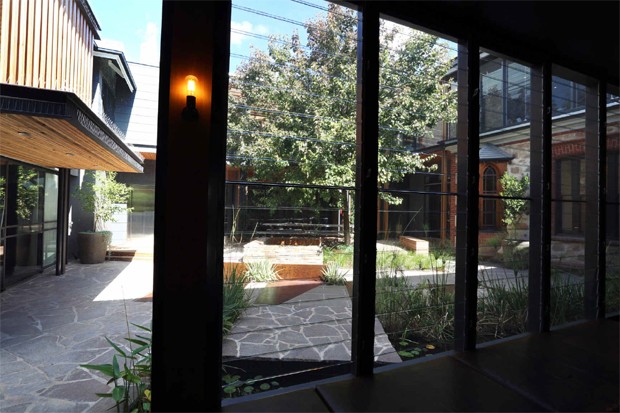
Windows are double-glazed and operable, so that natural airflows are available throughout the building to minimise the use of the air conditioning system.
According to architect David Burton, using raw materials in a refined form helped enhance the cohesion between the old and new, and connected internal spaces with outdoor areas. The perforated plywood ceilings in the studios dealt with acoustic requirements, but also generate warmth in the large void space.
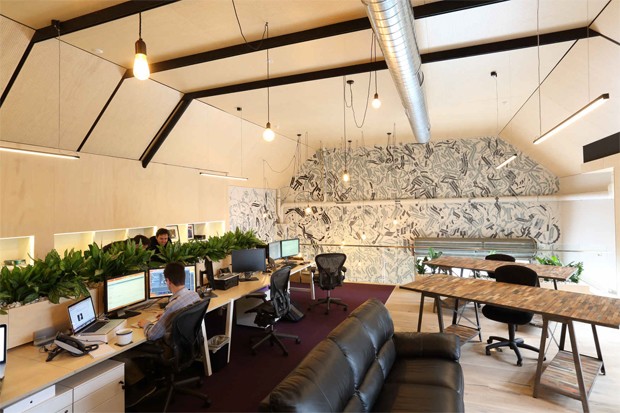
The material palette is primarily copper, steel, concrete and timber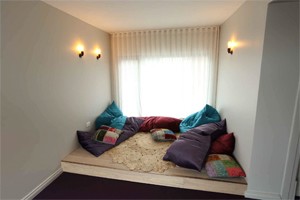
“Incorporating bold earth colours and plants within the residence were a key element in ensuring a homeliness feeling is achieved,” says Burton, who notes that the manipulation of existing spaces and fitout to create the flexible and stimulating areas that technology start-ups and small businesses favour were sympathetic to the historic building.
“Creating an interactive work community based around the central courtyard is a new offering to workspaces in Adelaide, ensuring the fundamentals and functionality of a typical workspace was achieved while establishing the comforts of a home,” he adds.
“An overwhelming feeling of engagement, relaxation, of ‘being at home’ is shaped through the curation of ‘soft spaces’ encouraging people to put their feet up and unwind.”

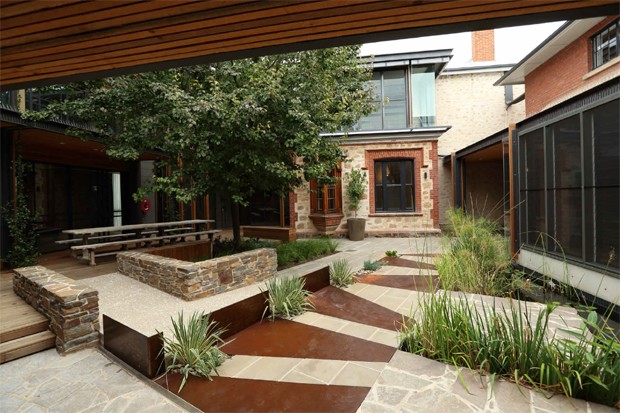
Focusing on the neglected courtyard with breakout areas and modifications reinforced the originally underutilised space as the heart and soul of the complex. Opening up the old studio space on the southern side of the courtyard allows light, warmth and physical connection, aimed to invite interaction between internal and external spaces.
Sustainability was another key factor in the client’s brief, and saw a derelict pool reclaimed into a 50,000L rainwater retention tank, and the roofs covered with solar panels with the aim of eventual off-grid operation.
 The buildings have also been completely rewired with new electrical cabling and Cat6E data cabling, and one building includes a state-of-the-art server room to allow for high-end computing resources on site as required.
The buildings have also been completely rewired with new electrical cabling and Cat6E data cabling, and one building includes a state-of-the-art server room to allow for high-end computing resources on site as required.
“Occupants have the convenience of high-speed fibre-optic cabling, offering download and upload speeds of one gigabit per second as well as a selection of fresh herbs and citrus growing throughout the grounds,” says Burton.
Base64 today is a far cry from its 1865 form, both in looks and in function. Replacing Sir Frederick Holder in the original building is the Hackett family office, while the rest of the base operates as a multi-tenanted facility, housing companies such as online wine merchant Vinomofo, and ‘big data’ analytics firm D2D (Data to Decisions). Here, the collegial environment so often fostered in the warehouse conversions of Silicon Valley rules, and the mix of conversation, meeting, eating and thinking spaces, in addition to offices and large, open-air collaborative spaces, encourages productive collaboration between residents and visitors.
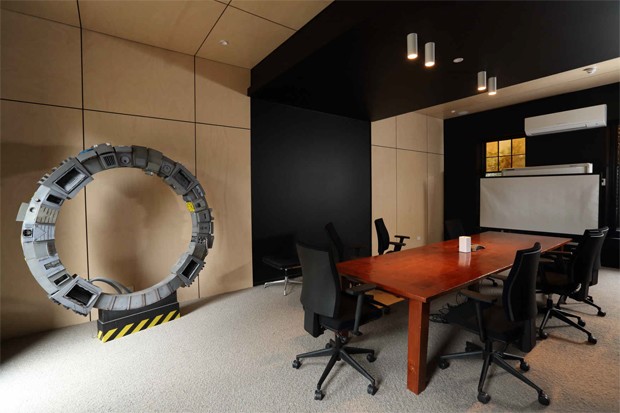

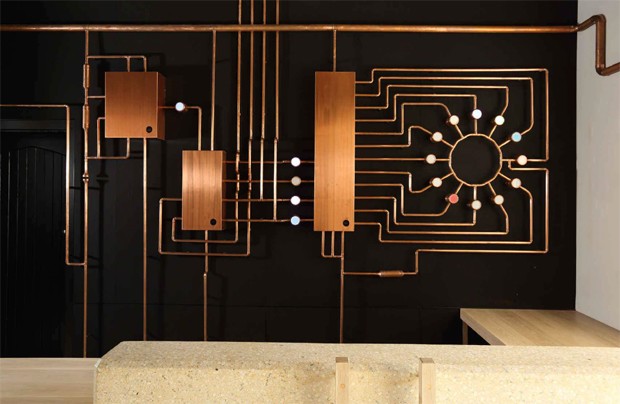


PROJECT DETAILS
ARCHITECTS: Williams-Burton Architects in collaboration with Anna Hackett
BUILDER: Sarah Constructions
KEY PRODUCTS: Skyrange steel windows, Custom joinery units, Copper range hoods, Repointing of heritage stone walls (Gosford stone), and Perforated plywood
LOCATION: 64 North Terrace, Kent Town, Adelaide SA

